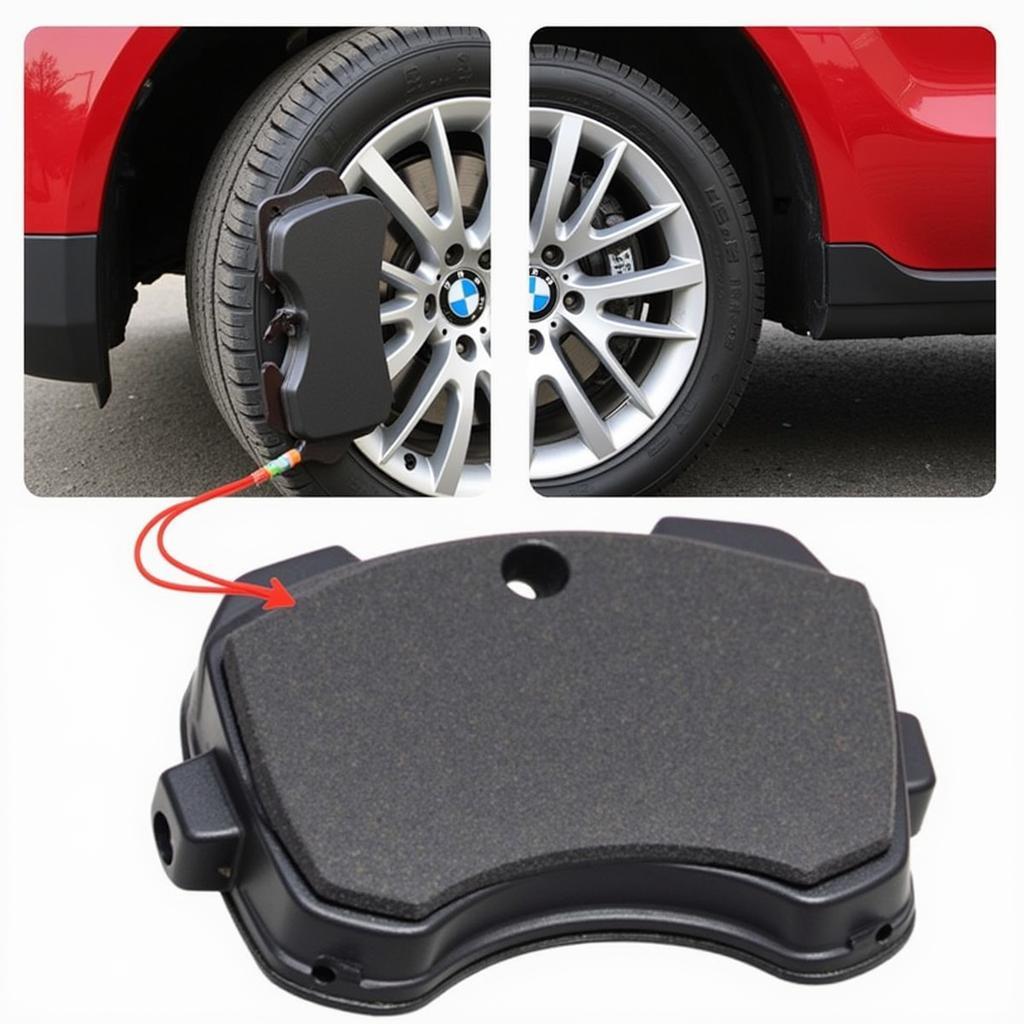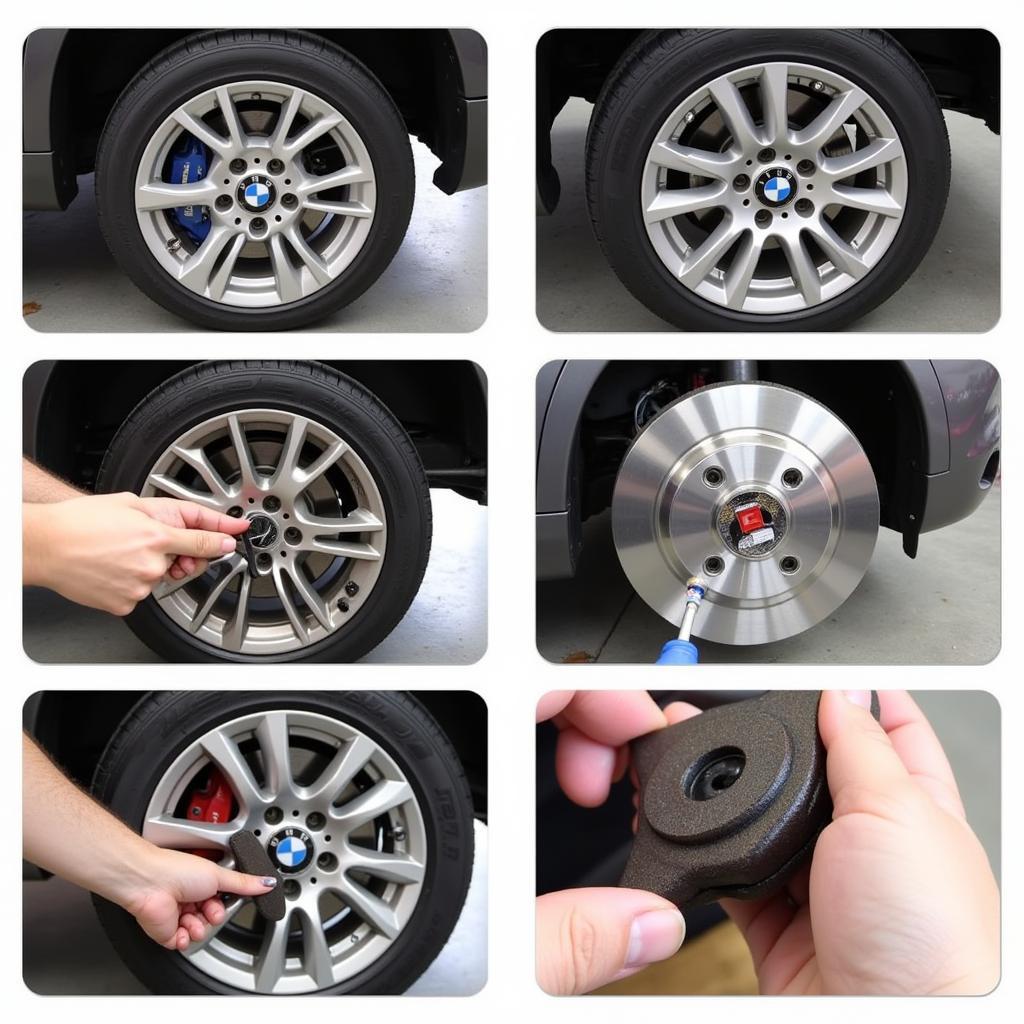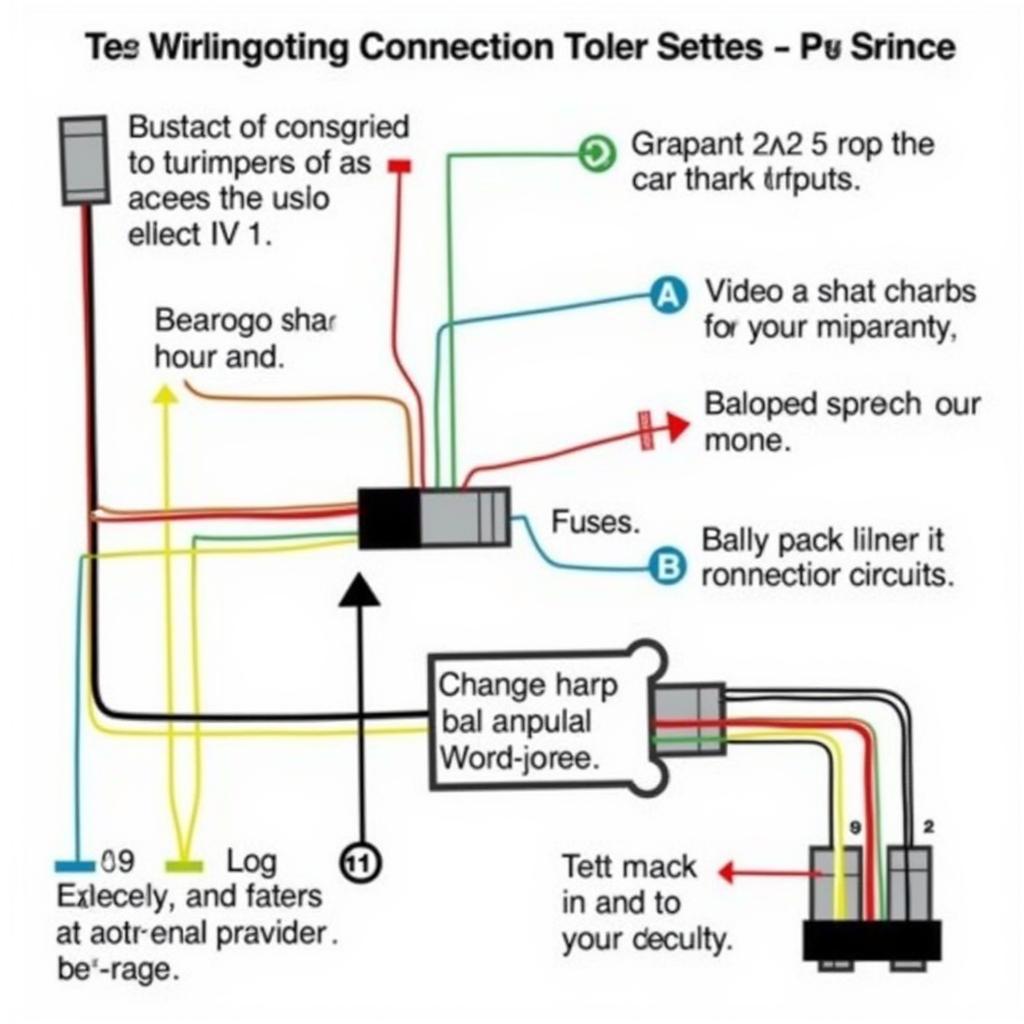That annoying little yellow light on your dashboard – the dreaded bmw brake pad warning – can be a source of anxiety. But understanding what triggers it, how long you can drive with it illuminated, and how to address it can save you time, money, and potential headaches down the road. This guide dives into everything you need to know about the bmw brake pad warning, from diagnosis to solutions.
Dealing with a bmw brake pad warning doesn’t always mean an immediate trip to the mechanic. Sometimes, a simple reset might be all you need. For those driving older models like the E46, check out this guide on how to reset bmw brake pad warning light reset e46.
This warning light is part of your BMW’s Condition Based Service (CBS) system, designed to proactively alert you to potential maintenance needs. It’s a crucial safety feature that shouldn’t be ignored.
Understanding the BMW Brake Pad Warning Light
The bmw brake pad warning light illuminates when the brake pad sensors, small wires embedded within the brake pads, detect that the pads are worn down to a predetermined thickness. This typically means it’s time for a brake pad replacement. However, other factors can trigger the warning, such as a faulty sensor, damaged wiring, or even low brake fluid.
Why is my BMW brake pad warning light on?
There are several reasons why your bmw brake pad warning might be activated. The most common cause is worn brake pads, but other possibilities include:
- Worn Brake Pads: The primary function of the warning light is to alert you to worn brake pads, indicating they need replacing soon.
- Faulty Brake Pad Sensor: Occasionally, the sensor itself can malfunction, triggering the light even if the brake pads are still in good condition.
- Damaged Wiring: A break or short in the wiring connected to the brake pad sensor can also activate the warning light.
- Low Brake Fluid: While a separate warning light usually indicates low brake fluid, in some cases, a significant drop in brake fluid level can also trigger the bmw brake pad warning light.
 BMW Brake Pad Sensor Location
BMW Brake Pad Sensor Location
How long can I drive with the BMW brake pad warning light on?
While the bmw brake pad warning light how long question is common, there’s no definitive answer. It depends on your driving habits, the condition of your brakes, and the specific BMW model. However, it’s highly recommended to address the issue as soon as possible. Continuing to drive with worn brake pads can compromise your safety and potentially damage other brake components, leading to more costly repairs. If you are wondering how to turn off bmw brake pad warning light, the solution lies in addressing the root cause, not simply silencing the warning.
Diagnosing the BMW Brake Pad Warning
Proper diagnosis is key to resolving the bmw brake pad warning. Here’s a step-by-step approach:
- Visual Inspection: Check the brake pads visually. Look for significant wear or if the pad material is close to the backing plate.
- Check Brake Fluid Level: Ensure the brake fluid reservoir is filled to the appropriate level.
- Diagnostic Scan: Using a BMW-compatible diagnostic tool, you can read the error codes related to the brake system, providing more specific information about the problem.
Resolving the BMW Brake Pad Warning
Once you’ve diagnosed the problem, here’s how to address it:
- Replace Brake Pads: If the brake pads are worn, replace them with high-quality OEM or equivalent parts.
- Replace Brake Pad Sensor: If the sensor is faulty, it needs to be replaced. This is typically done along with a brake pad replacement.
- Repair Wiring: If the wiring is damaged, repair or replace the affected section.
- Top Up Brake Fluid: If the brake fluid is low, add brake fluid to the recommended level. Be sure to use the correct type of brake fluid specified for your BMW model.
For those who prefer a DIY approach, there are resources available on how to reset bmw brake pad warning. However, it’s crucial to follow the correct procedures for your specific BMW model. Sometimes the warning light may not go off, as discussed in this article: bmw brake pad warning light won’39.
 BMW Brake Pad Replacement
BMW Brake Pad Replacement
Conclusion
The bmw brake pad warning is a crucial safety feature that shouldn’t be ignored. While worn brake pads are the most common cause, other factors can trigger the warning. Prompt diagnosis and appropriate action are essential to ensure your safety and prevent further damage to your BMW’s braking system. Remember, addressing the underlying issue is the only way to truly turn off the bmw brake pad warning light and ensure your vehicle’s optimal performance and safety.
FAQ
- What does the bmw brake pad warning light look like? It’s typically a yellow circle with a segmented circle inside, resembling a brake disc with brake pads on either side.
- Can I reset the bmw brake pad warning light myself? Yes, it’s possible, but the process varies depending on the BMW model. It’s best to consult your owner’s manual or a reliable online resource.
- How much does it cost to replace BMW brake pads? The cost varies depending on the model, labor rates, and the type of brake pads used.
- How often should I replace my BMW brake pads? There’s no set interval. Brake pad life depends on driving habits and conditions.
- Is it safe to drive with the bmw brake pad warning light on? It’s not recommended. Driving with worn brake pads can be dangerous and lead to further damage.
- What if the light stays on after replacing the brake pads and sensor? There might be a persistent issue with the wiring or the brake system. Further diagnosis is required.
- Can I use aftermarket brake pads on my BMW? Yes, but choose high-quality pads from reputable brands to ensure optimal performance and safety.


